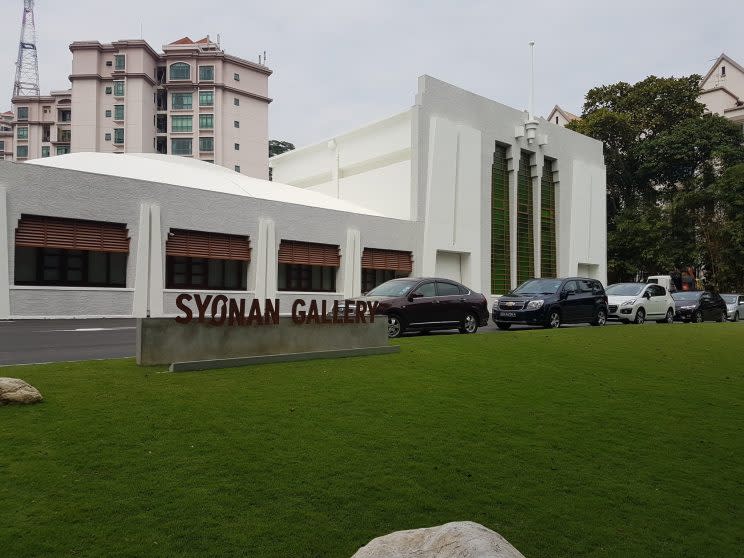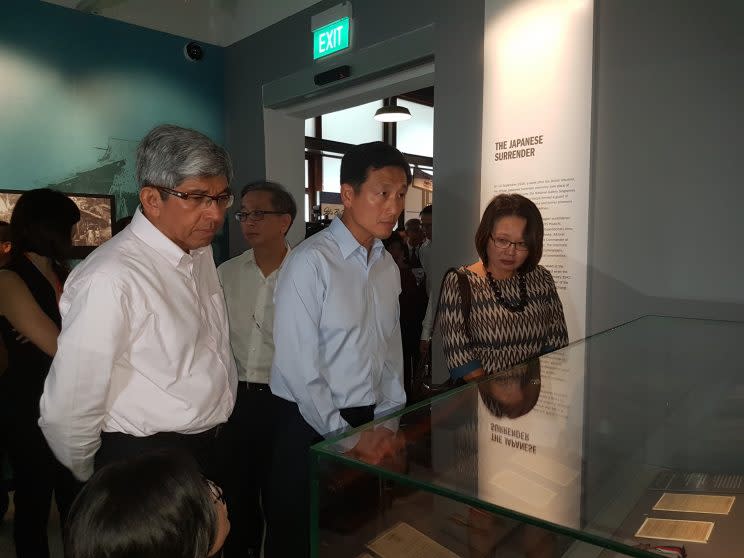COMMENT: Sayonara to Syonan – with a message

Born in post-Occupation Singapore, I was immune to the horrible pain and trauma an older generation had suffered under Japanese soldiers — until I got close to an ex-colleague many years ago.
I had the good fortune of working with this Chinese man with a shrivelled body and an unsmiling face. He didn’t speak much but his face communicated the thousand words of a painful past. I got a taste of that back story when I once remarked, “I notice that you never go to Yaohan.” At the time, Yaohan was a popular Japanese shopping mall in Singapore.
“You wouldn’t too if your family had been tortured by the bloodied hands of the Japanese,” he said and refused to talk more about it. The bitterness in his words was palpable.
When the government made one of the fastest turnarounds in its 50 year-history by renaming Syonan Gallery, an exhibition to mark the 75th anniversary of the unimaginable hardship, torture and starvation that a generation went through, my friend’s painful story replayed in front of my eyes. Somehow, the government seemed to have forgotten this pain of a pioneering generation, especially the Chinese, who have been trying to find a closure to the atrocities they suffered. And it exposed a glaring weakness that, if not addressed, will only bring the government more trouble.
When the National Library embarked on a feedback process to find a suitable name for the Gallery, this important demographic’s true emotions were not sussed out. The committee of history academics, museum guides, students and parents obviously didn’t have a good feel for the pulse of the older Singaporeans. If they did, they did not articulate it loud enough to be heard. If they did speak up, they didn’t do it vigorously enough to tell NLB officials that Syonan is not a name that sits well with the people of my late friend’s generation.
Out of touch?

One major problem here is the inability to listen, read body language and make an objective assessment of the points being made. In many ways, Singapore is an echo chamber with people listening to their own voices, lacking an understanding of the finer points of history and grappling to understand a society in transition.
Knowledge of just one historical fact, as reported by Mothership.sg, might have avoided this unnecessary episode: a 1963 rally involving 120,000 protesters demanding that Japan pay M$50 million as compensation, or Blood Debt, for the atrocities committed on our people. If this episode and its implications had been understood in all its dimensions by the committee, maybe this embarrassment could have been avoided.
It points to one disturbing fact: that the people running the government machinery are losing touch with an important segment of society. Older citizens are a vote bank the government will ignore at its own peril.
It learned a brutal lesson in 2011 when politicians did not understand the depth of feeling of this and other groups resulting in the ruling party’s popular vote share slipping to a historic low of 60.1 per cent. Many measures, including efforts to take care of the old, were rushed through. Six years later, and we are witnessing another pushback from this group.
The gallery’s opening ceremony went ahead on Wednesday (15 Feb) with Minister for Communications and Information Yaacob Ibrahim explaining that he understood the feelings of some people, but that Syonan was chosen to remind Singaporeans of a tortured past. Then two days later, after officials initially defended the name, reality bit and Syonan Gallery was erased. A rather long replacement name, “Surviving the Japanese Occupation: War and its Legacies”, was announced.
What made the government change its mind? Yaacob said he had read several comments on the issue and received many letters from Singaporeans who said the words ‘Syonan Gallery’ had “evoked deep hurt in them, as well as their parents and grandparents”. Prime Minister Lee Hsien Loong added, “My colleagues and I honour and respect these deep feelings. So we have renamed the exhibition to bear witness to these painful memories.”
But Co-ordinating Minister of Transport Khaw Boon Wan’s public statement might offer another clue. He welcomed the decision and said that the Japanese Occupation had “left deep scars in us”. Khaw’s connection with the Japanese past is very real. He revealed that his own own maternal grandfather “died of starvation and for lack of medical care while in hiding”. His school in Penang, Chung Ling High, was also robbed and ransacked by the Japanese. Ten teachers were tortured, with only two surviving. Forty students were killed. Did the Minister have a role to play in the name change?
We can only try and fill in the pieces of the puzzle as he was the only other minister to comment on the Syonan decision-making process. Why was there a need for him to issue that statement?
As we think about Khaw’s role and as the Syonan controversy recedes into the background with quick intervention by the government, the lessons it offers on officialdom’s decision-making process needs further scrutiny.
P N Balji is a veteran Singaporean journalist who was formerly chief editor of Today, as well as an editor at The New Paper, and currently a media consultant. The views expressed are his own.
Related:



